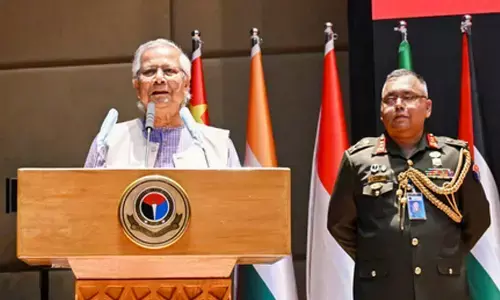Upper stage of PSLV-37 rocket enters earth’s atmosphere

Bengaluru:The upper stage of PSLV-37 rocket, which launched a record number of 104 satellites more than seven years ago, has re-entered the earth's atmosphere as predicted, the Indian Space Research Organisation announced on Tuesday.
PSLV-C37 was launched on February 15, 2017 with Cartosat-2D as the main payload along with another 103 satellites as co-passengers. It created history as the first mission to launch 104 satellites with a single vehicle, the Bengaluru-headquartered national space agency noted in a statement.
After injecting the satellites and passivation, the upper stage (PS4) was left at an orbit of approximately 470 x 494 km size. It was regularly tracked and its orbital altitude slowly decayed, primarily due to atmospheric drag effects, it said.
Since September 2024, IS4OM (ISRO System for Safe and Sustainable Space Operations Management) regularly monitored the orbital decay as part of its regular activities and predicted the re-entry into the atmosphere in October first week. The re-entry occurred on October six. "The corresponding impact point is in the North Atlantic Ocean," it said.
"The atmospheric re-entry of the rocket body within eight years of its launch is fully compliant with the international debris mitigation guidelines, in particular, the guideline of Inter-Agency Space Debris coordination committee (IADC) that recommends limiting the post-mission orbital life of a defunct object in Low-Earth orbit (LEO) to 25 years," the statement said.


















